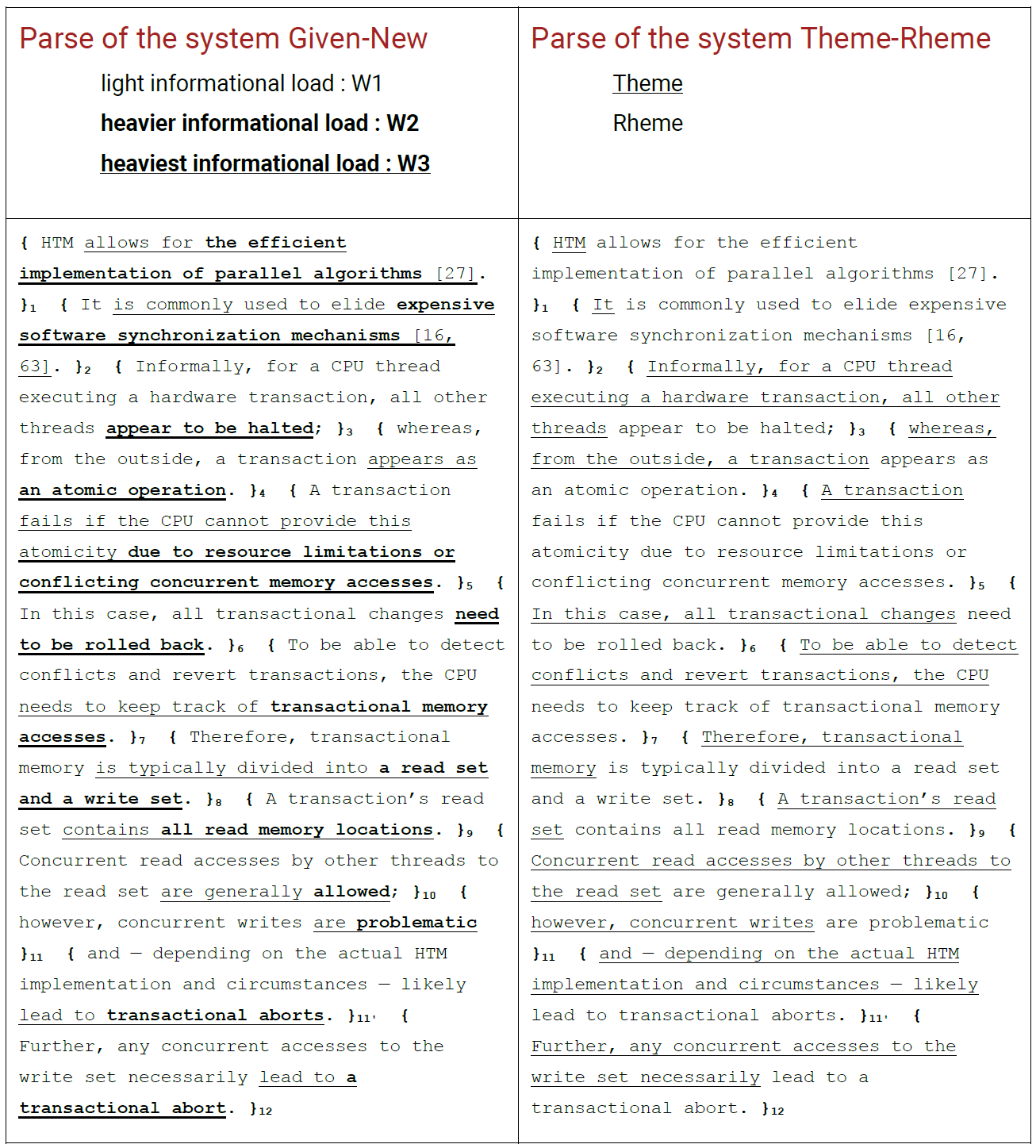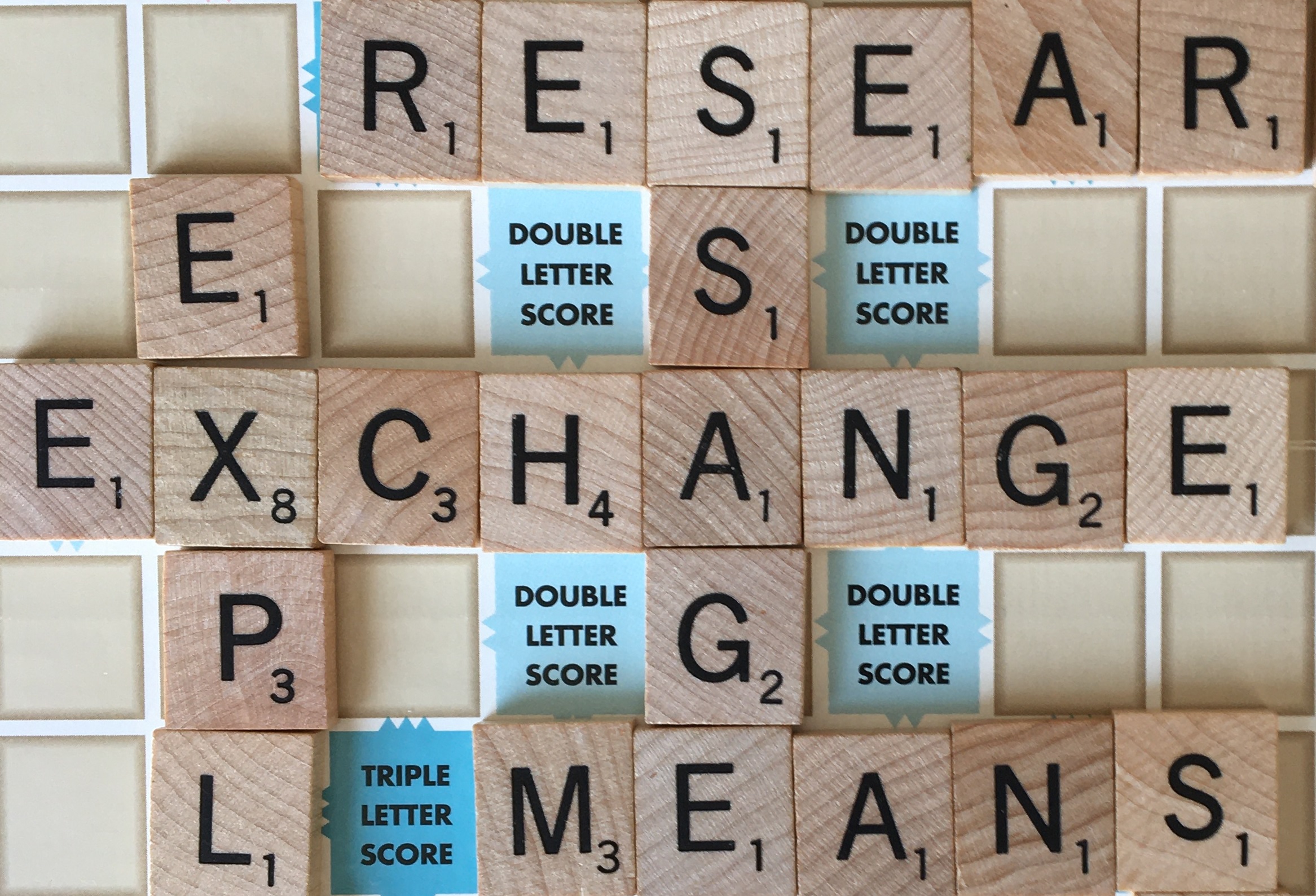Background on Text
Let's recap the subseries so far.
You have heard about Theme, and you have learned the functional-linguistic sense of the word Information. You know how the system of Theme-Rheme constructs text as the text occurs in the eye of the writer; and also, you know how the system of Given-New constructs text as the text appears in the mind of the reader. You know, too, that Message — the highest level concept here — is the distribution of Information throughout the clause and consequently, throughout an entire text. You have seen how Information is broken down into units, which same units also perform the basic three grammatical-representative functions of every clause: Process, Participant, Circumstance. Importantly, you have noted that units of Information are not distributed uniformly, neither in a clause nor in the text. Instead, the units enter the discourse sometimes as a topic and sometimes as just a detail about the topic. Basically, every word and also the position of every word carry distinct values, and these values are measured as weights. Information is either light or heavy, and the light Information floats toward the front of the clause, while the heavy Information sinks toward the back.
Now, you will remember that the two systems of Theme-Rheme and of Given-New are each grounded in the two different parties to the communication through text, i.e., the writer and the reader. In the system Theme-Rheme, it is the writer who is looking at the clause. The writer uses the sorting-function of Theme to decide on the material to include in the next sentence and in the next and the next. Thus, the function of Theme-Rheme is to orient.
The function of Given-New, on the other hand, is to inform. The system Given-New is, in many ways, much the opposite to the system Theme-Rheme. Given-New really provides the categories in which a reader will think, because the system does not sort, but instead, the system assesses the value of material. Every grammatical unit of the clause is simultaneously unit of Information in the text; so, whereas the grammar accesses the units Process, Participant, and Circumstance in order to arrange materials, the text accesses these same units in order to evaluate materials. In this way, two systems work through one interface to effect two purposes: the Given-New to inform, the Theme-Rheme to orient. It is this multifunctionality of the words on the line which complicate both the writing and the reading experiences. Neither act is straightforward — both acts are doing many things across any line of text.
Here, have a look again at our example paragraph, and in this look, notice the asymmetry between the systems of Given-New and Theme-Rheme:

Mirror images, right? I mean, I can't think of a better illustration of the opposing views on the text held by the writer and the reader. The meanings in the Theme are weighted light on informational value, but those meanings perform high on the writer's organizational task of threading clauses together. On the other hand, the meanings usually picked up in the Rheme — these weigh heavy and they weigh heavier in the cognitive load of a reader moving down the clauses of a text.
In sum, you might say, Themes tend to provide writers with the instructions on what to write about, while Rhemes tend to provide readers with the instructions on why those topics matter in the first place.
Now, I want to emphasize that these systems, Theme-Rheme and Given-New, are separate and distinct systems in the grammar. Both do perform textual arrangement functions for the Message, but really from very different angles. And what is more, the full and true nature of Given-New would require an excursus on intonation in the spoken language. So, what I'm saying is, the above description is very tailored to your needs for scientific text. But that, precisely, is the real aim of Background on Text: To explain just the linguistics you need in order to use text for research purposes.
So, with all this Message-background in place, I want now to build on it and discuss these two related-interrelated matters of the Message:
(1) The part played by the writer in the system of Theme-Rheme, and in particular, the use which any writer might make of their own part in the system.
(2) The part played by the reader in the system of Given-New, and in particular, the use which any reader might make of their own part in the system.
I'll take on each of these in turn, first the reader's part in Given-New in the next post, and second the writer's part in Theme-Rheme in the post after that.
Please email comments or questions to daniel.shea∂kit.edu
This blog is for you.

